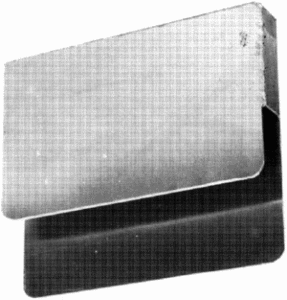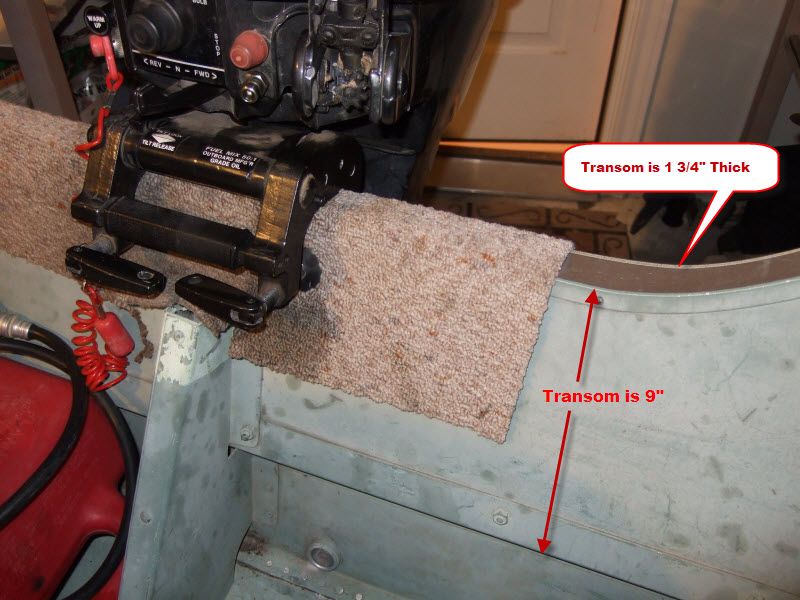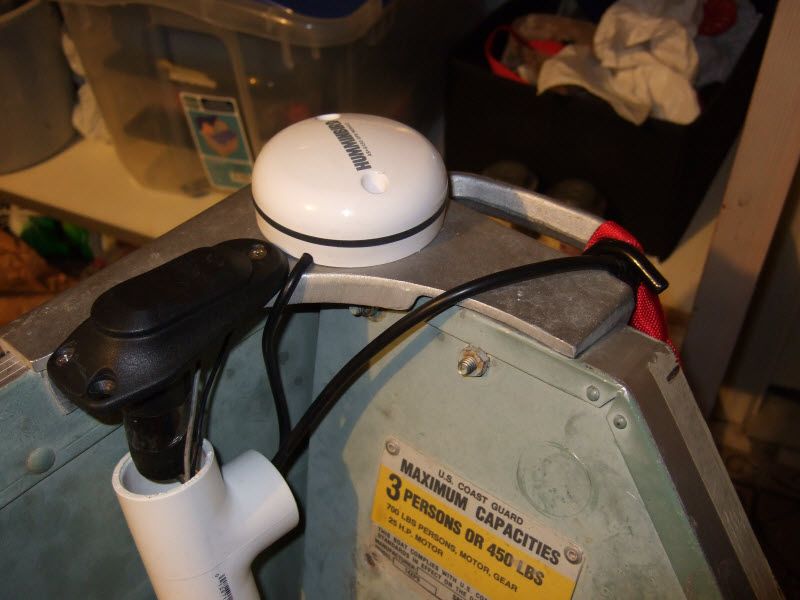Does anyone have a 14' semi-v with a 120lb motor on a jack plate ?
I am buying a new outboard 20hp 4 stroke. It will weight roughly 120lbs. My old 15hp 2 stroke weighs 65lbs. So I am going to be adding 55lbs to the back of the boat. Right now on windy days 10-12mph, I have had a few waves splash over the back of the boat when I was sitting still. I already have the trolling motor mounted in the middle, so no other weight to move forward. On normal days it is not bad, just feeling like I need extra security.
My boat is a 1986 Sea King by Smoker Craft, semi V with 20" sides,but the transom is cut down to 15" from factory. The hull says it is rated for 25HP. But back in 1986 how much did a 25HP 2 stroke weigh.
My concern is with the extra weight, the boat will sit even lower. I think my options are :
1) Get 15" motor, and add some type of splash gaurds.
see this example :

2) Get 20" motor and figure out how to fill in transom to enclose the whole thing.. problably have to pay a fabricator.. one quote was $400 to encolse in alum.
3) get 20" motor and buy a mini jack plate or use Alum Angle to raise motor up.
see this pic for example homade jack plate:
 jack plate would be mounted on outside of transom then use clear lexan on inside to give me a full width splash guard. This options looks cheaper then #2 and probably could be done by myself.
jack plate would be mounted on outside of transom then use clear lexan on inside to give me a full width splash guard. This options looks cheaper then #2 and probably could be done by myself.
4) buy a transom elevator or build one. This has the advantage of not setting the motor back, seems like it would create less of a lever effect than a jack plate.

MY CONCERNS with a 20" motor and jack plate are can my transom deal with 120lbs raised up 5" and set back at least 2-3" .. That will act like a lever and make the weight of the motor even greater. ALSO not sure how that will effect handling ect..
Maybe I am overthinking this .. may just buy 15" motor and build some splash gaurds for etc security and install bilge pump..
Here is pictures of my boat and transom. Notice the thick wood part is only 9" not all the way down the full 15", and only 1 center brace. However the side brackets seem pretty sturdy cast alum . Again boat in 1986 was rated fro 25hp.




Here is a picture of my boat to show how low it site. NOTE THIS IS with the trolling motor batter in the back. I have moved the batter to the middle. But this pic should show how the boat will sit if I put a heavier motor on.

WHAT DO YOU GUYS THINK ?
I am buying a new outboard 20hp 4 stroke. It will weight roughly 120lbs. My old 15hp 2 stroke weighs 65lbs. So I am going to be adding 55lbs to the back of the boat. Right now on windy days 10-12mph, I have had a few waves splash over the back of the boat when I was sitting still. I already have the trolling motor mounted in the middle, so no other weight to move forward. On normal days it is not bad, just feeling like I need extra security.
My boat is a 1986 Sea King by Smoker Craft, semi V with 20" sides,but the transom is cut down to 15" from factory. The hull says it is rated for 25HP. But back in 1986 how much did a 25HP 2 stroke weigh.
My concern is with the extra weight, the boat will sit even lower. I think my options are :
1) Get 15" motor, and add some type of splash gaurds.
see this example :

2) Get 20" motor and figure out how to fill in transom to enclose the whole thing.. problably have to pay a fabricator.. one quote was $400 to encolse in alum.
3) get 20" motor and buy a mini jack plate or use Alum Angle to raise motor up.
see this pic for example homade jack plate:

4) buy a transom elevator or build one. This has the advantage of not setting the motor back, seems like it would create less of a lever effect than a jack plate.

MY CONCERNS with a 20" motor and jack plate are can my transom deal with 120lbs raised up 5" and set back at least 2-3" .. That will act like a lever and make the weight of the motor even greater. ALSO not sure how that will effect handling ect..
Maybe I am overthinking this .. may just buy 15" motor and build some splash gaurds for etc security and install bilge pump..
Here is pictures of my boat and transom. Notice the thick wood part is only 9" not all the way down the full 15", and only 1 center brace. However the side brackets seem pretty sturdy cast alum . Again boat in 1986 was rated fro 25hp.




Here is a picture of my boat to show how low it site. NOTE THIS IS with the trolling motor batter in the back. I have moved the batter to the middle. But this pic should show how the boat will sit if I put a heavier motor on.

WHAT DO YOU GUYS THINK ?
































































